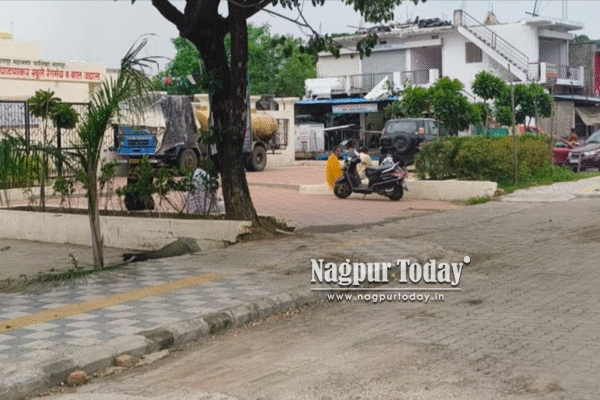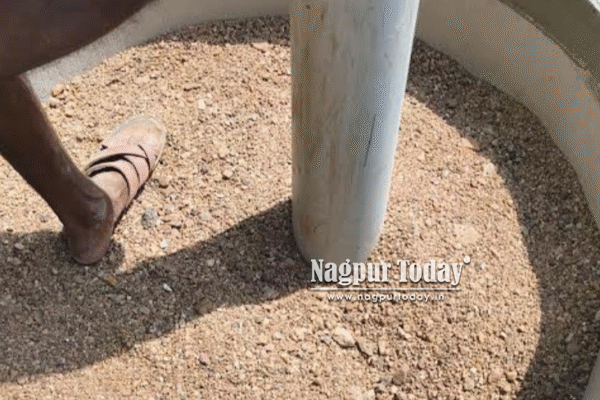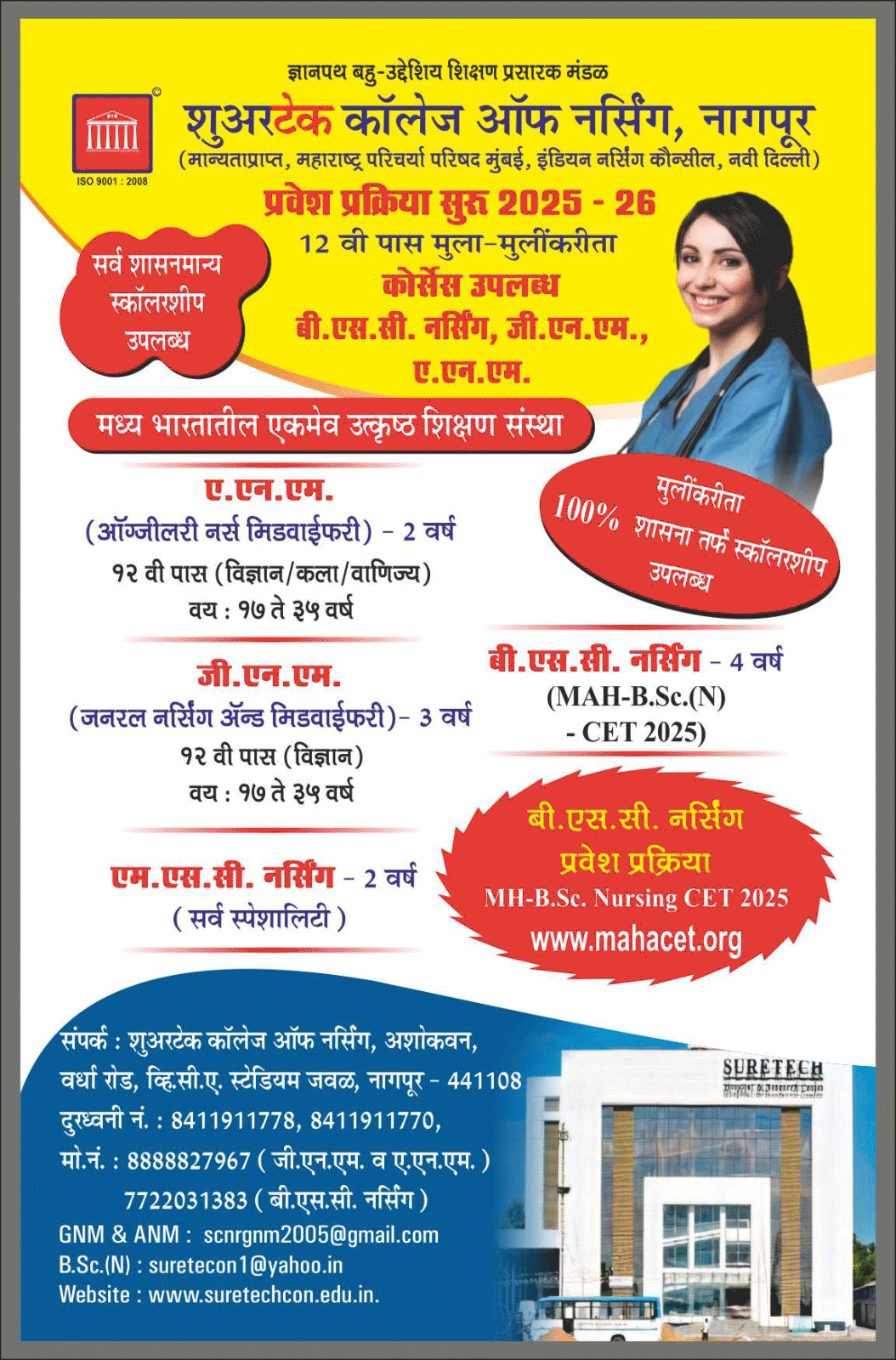Nagpur Leads the Way in Sustainable Urban Infrastructure with Groundwater Recharge on Cement Roads

As part of efforts to reduce long-term maintenance costs and enhance road durability, NMC has been actively replacing asphalt roads with cement roads across the city. However, since cement surfaces typically prevent rainwater seepage, the administration, led by Municipal Commissioner and Administrator Dr. Abhieet Chaudhari, has incorporated specially designed groundwater recharge systems into the cement road infrastructure.
Currently, 196 recharge pits are under construction along 33 roads, covering a total length of 23.45 kilometers within 14 construction packages. So far, 41 recharge pits have been completed and are fully operational, with the remainder progressing steadily.
During a recent inspection of a recharge pit near Joggers Park in Sneh Nagar, Khamla, Dr. Chaudhari highlighted technical refinements to maximize efficiency. He directed that PVC pipes linking rainwater drains to recharge chambers be positioned one foot above the chamber level to ensure optimal water collection, even during light rainfall.
According to Shri Shashank Tatewar, Technical Expert on the project, these recharge pits can store between 100 to 150 cubic meters of water during rainfall events measuring 50 mm per hour. Each pit serves a catchment area ranging from 2,000 to 4,000 square meters, significantly aiding in replenishing local groundwater reserves.
How the System Works
Each recharge unit comprises a 1-meter diameter, 2-meter deep pit with a 20-meter borehole at its base. A perforated pipe extends into the borehole, surrounded by graded layers of gravel and sand that filter incoming water. This design allows rainwater collected from adjacent roads and drains to seep deep into the ground, thus boosting the groundwater table.

Residents in affected areas have welcomed the initiative, noting reduced waterlogging and improved groundwater availability.
Setting a Model for Sustainable Urban Planning
Executed under the guidance of Visvesvaraya National Institute of Technology (VNIT) and supervised by M. Creations Pvt. Ltd., Pune, this project is setting a benchmark for eco-friendly urban infrastructure. Cement roads, expected to last 20 to 25 years longer than asphalt, combined with effective rainwater harvesting, position Nagpur as a leader in sustainable city planning.
As more recharge pits become operational, the NMC aims to further alleviate waterlogging, lessen dependence on external water supplies, and secure long-term groundwater sustainability for Nagpur.















